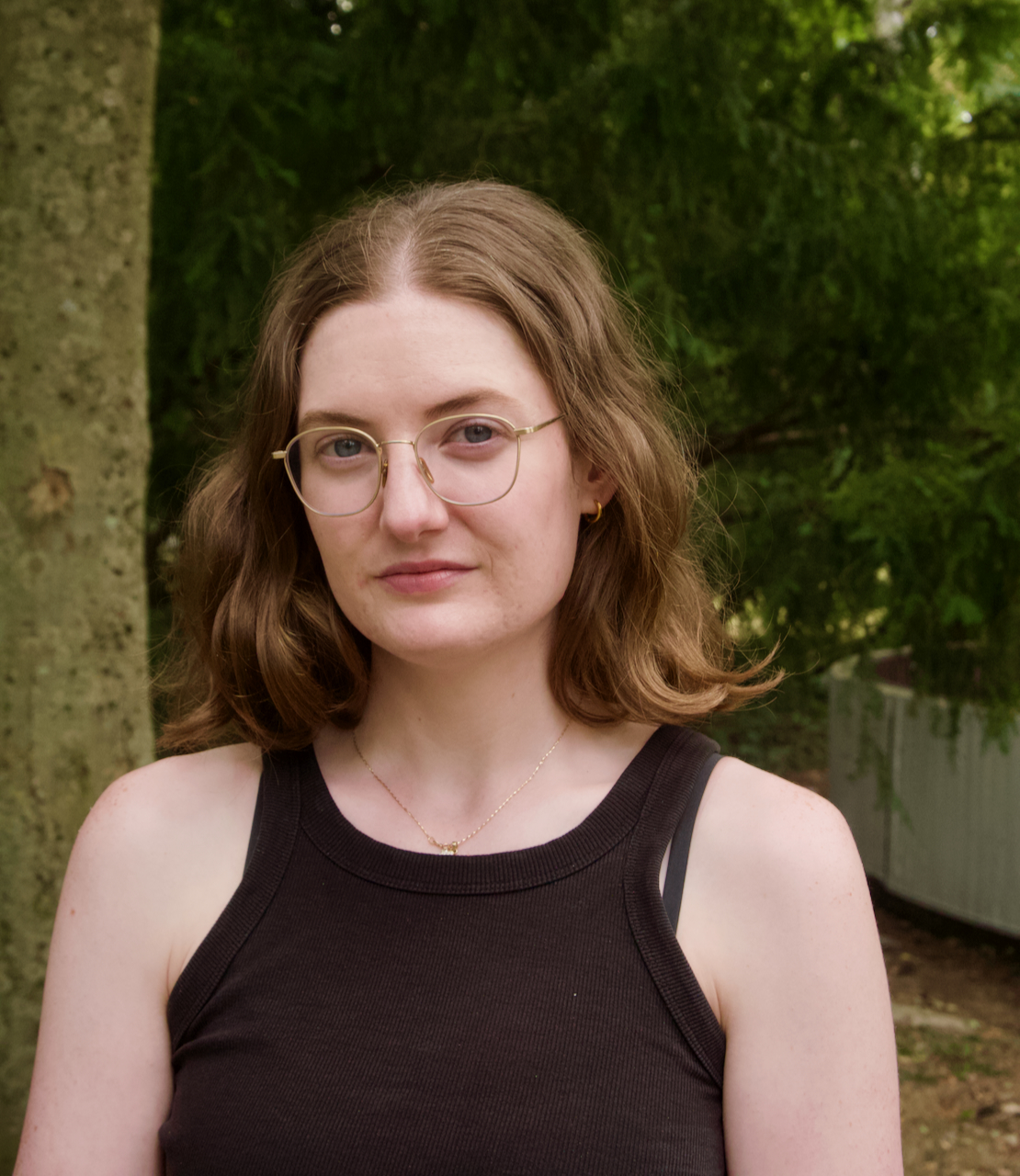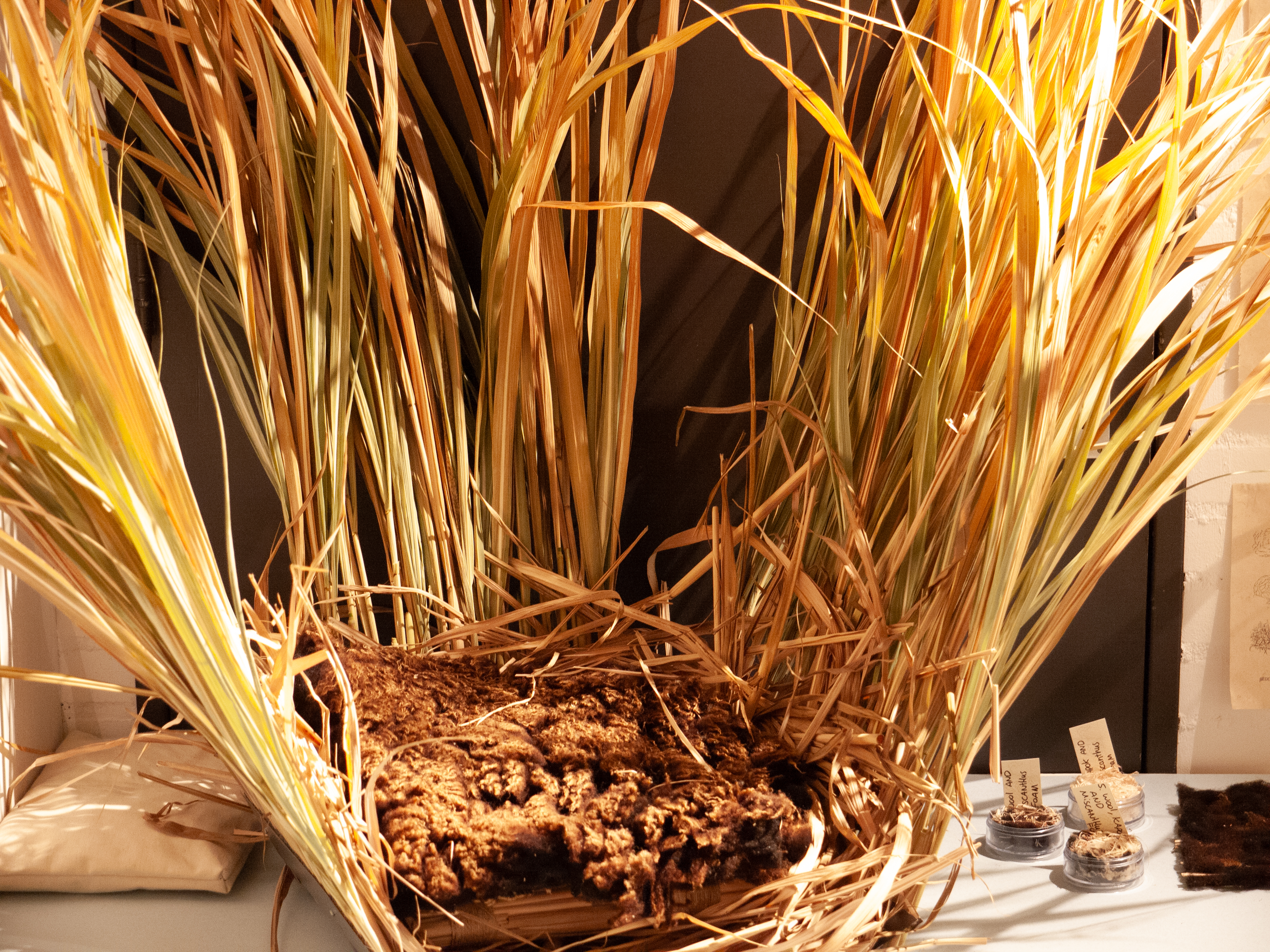Martina Raponi, an Italian writer and artist currently based in Amsterdam, the Netherlands, brings a unique blend of academic rigor and artistic exploration to her role as an art theory tutor at WdKA. With a diverse educational background spanning humanities, art mediation, and fine arts, Martina's journey into the world of artistry is a truly inspiring one.
 Portrait of Martina by Antoinette Dyksman
Portrait of Martina by Antoinette Dyksman
Can you tell us about your background and how you became an artist?
“Certainly! My journey into the art world was quite unexpected. I began as a writer, deeply engrossed in the world of literature and art critique. It wasn't until nine years ago, when I published my first book on noise in Italy, that I realized the potential for my creative expression. This fascination with sound stemmed from personal experiences, particularly my father's Deafness, which led me to explore auditory sensations in diverse ways. My transition to becoming an artist was rather serendipitous. After applying to the Sandberg Instituut in the Netherlands on a whim and gaining acceptance, I discovered that my writing practice could evolve into something more. Despite lacking formal training, I delved into the world of art, experimenting with performances and artworks. The journey was noisy, filled with unexpected turns and failures, but ultimately, it was far more enriching than following a predetermined path.”
What is your subject of knowledge?
“My expertise lies in the realm of noise—a concept that impacts every aspect of our lives. Noise, in its myriad forms, intrigues me. It can be both literal and abstract, perceptual and conceptual, echoing across various disciplines. I'm fascinated by its ever-changing nature and its ability to challenge conventional norms. Noise isn't just about disruptive sounds; it encompasses intentions, plans, and the unexpected. It serves as a catalyst for change, pushing boundaries and prompting societal shifts. My exploration of noise extends beyond mere observation; it's a lifelong journey into understanding its nuances and implications.”
How do you translate this into practice?
“My artistic endeavors revolve around various projects, with "noiserr" being a significant ongoing project since 2016. It emerged from a desire to delve deeper into noise beyond academic discourse. Noiserr serves as a platform for individuals to engage in noise reading and research collaboratively. Through curated sessions and discussions, participants explore the multifaceted nature of noise, bridging the gap between theory and practical application. Additionally, my art practice encompasses workshops, collaborative initiatives like the NRU (Noise Research Union), performances, and immersive experiences utilizing VR and XR technologies. Each project presents unique challenges and opportunities, contributing to a holistic understanding of noise in contemporary society.”
 noiserr logo credited to Janneke Absil
noiserr logo credited to Janneke Absil
What defines you as a tutor?
“As a tutor, I bring a blend of organization and curiosity to the classroom. I strive to create structured environments where students feel empowered to explore their ideas freely. My role isn't to dictate knowledge but to facilitate meaningful discussions and foster intellectual curiosity. I believe in dismantling hierarchies and embracing diverse perspectives, creating a space where learning is collaborative and inclusive. My teaching philosophy mirrors my approach to noise: flexible, adaptable, and open to interpretation.”
What do you love about teaching?
“One of the most rewarding aspects of teaching is witnessing the spark of confusion that ignites curiosity. I thrive on unraveling complexities and guiding students through moments of uncertainty. Noise, with its inherent ambiguity, serves as a metaphor for the learning process: disambiguating information, finding patterns of interests, and embracing the unknown. Teaching allows me to cultivate this sense of inquiry, challenging both myself and my students to explore beyond conventional boundaries.”
What do you bring from your own practice into the classroom?
“My teaching style reflects my interdisciplinary approach to art, heavily influenced by sound studies and philosophy. I introduce students to unconventional methodologies, encouraging them to view the world through a sonic lens. By integrating elements of sound into visual culture and fostering experimentation, I aim to broaden students' perspectives and push them out of their comfort zones. My goal is to instill a sense of confidence in navigating ambiguity, equipping students with the tools to thrive in an increasingly complex world.”
 screenshot of NNNV XR by courtesy of the artist
screenshot of NNNV XR by courtesy of the artist


